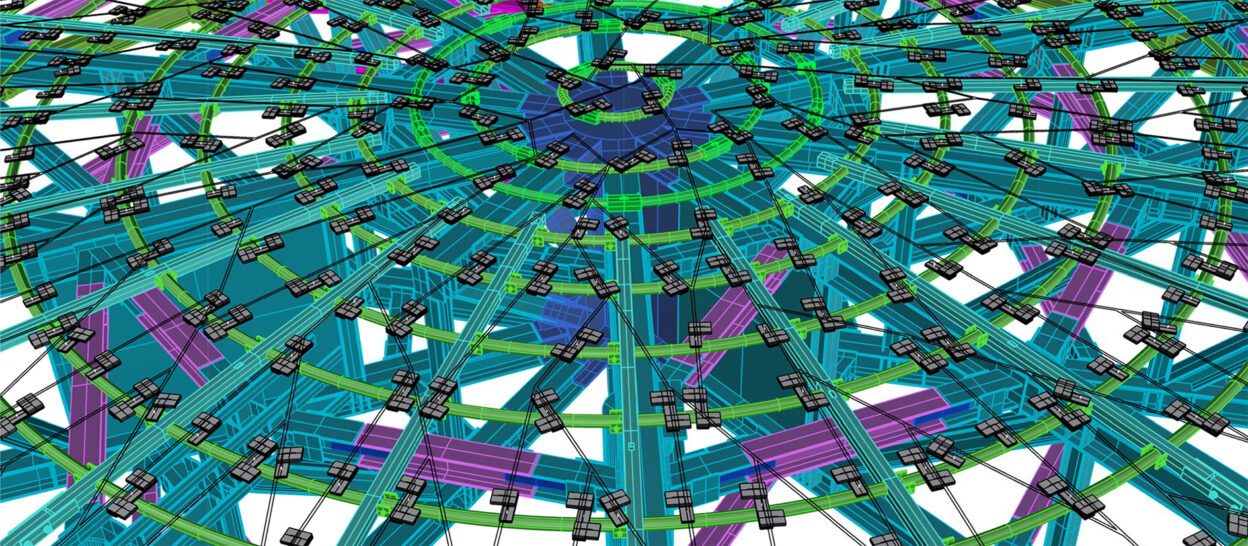
The Digitalisation of the Construction Industry
In an interview for INGBWaktuell, the newsletter of the Baden-Württemberg Chamber of Engineers, he spoke about the digitalisation of the construction industry. The interview was published in May 2021. This text is a slightly abridged version of that interview, which is reproduced here with the kind permission of the Baden-Württemberg Chamber of Engineers.
What is the current situation regarding the digitalisation of the construction industry, how much is BIM used in the construction industry and by architects and engineers?
Certainly, the current situation has contributed to the fact that a digitally networked way of working has also become established in the construction industry more quickly than we could have imagined a year ago. Many architects and engineers have of necessity become acquainted with new digital tools and methods and have come to appreciate the advantages of working as part of a digital network. But a significant increase in the degree of digitalisation was already noticeable in the years before. In addition, building owners are increasingly defining and demanding BIM requirements in tenders. In an international comparison, however, Germany certainly does not occupy a top position in the digitalisation of the construction industry.
Broken down to the three main arguments: What is the case for BIM in planning?
To reduce it briefly to three topics: Improved communication and quality through transparency, the associated higher efficiency and the opportunity for all those involved to be able to use the data sustainably for different purposes throughout the entire life cycle. BIM is not just a planning method, but includes the entire life cycle of a building, i.e. starting with the initial ideas, the planning, the construction, the operation up to the conversion and deconstruction – therein lies the great opportunity.
How do you think BIM needs to develop further?
Currently, the focus of many stakeholders in the application of BIM is on digital planning and construction – and thus only on a very limited part of the life cycle of a building. Many planners appreciate the opportunities of the integral, cooperative and collaborative approach with the BIM methodology, but also see the risk of additional work that the development and management of very large amounts of data and their exchange can entail. Without critically questioning certain requirements, there is a risk that the effort and the result will not be in proportion to each other.
Thus, the required modelling depth should not be based on what is technically possible, but on what is actually necessary and useful at the time in question. In the face of fierce competition, the contractors, in turn, are looking for ways to ensure a precise and effective production and assembly process in order to increase their own productivity. Here, BIM offers many opportunities and possibilities. It is obvious that the traditional interface between planning and realisation is becoming increasingly permeable in the course of digitalisation: Boundaries between individual service areas are shifting or dissolving completely.
For reasons of sustainability, our focus when working with BIM should in future increasingly be on operation, revitalisation, deconstruction and the return of the materials used into biological and technical cycles. However, this requires the orderly transfer of digital data after construction to operation, i.e. to facility management, and its maintenance over many decades until deconstruction. The parties involved must be clear about this at the beginning of a project and agree on the corresponding goals with each other.
What do you currently see as important trends that will contribute to the digitalisation of the construction industry? And what impact do you see this having on the work of civil engineers?
Digitalisation makes it possible to turn the screws on a large scale for a more efficient use of economic and ecological resources – even if there are certainly still various technical and structural as well as legal hurdles to overcome. The collection and processing of building data is not an end in itself, but opens up an invaluable data pool, especially if this data is not only available for a single building, but for a coherent urban space. All in all, this is certainly a very complex undertaking, but one that also holds great potential.
For the individual, the ability to work integrally and digitally far beyond the traditional disciplinary boundaries is becoming increasingly important in order to find solutions to challenges in the long term and also to take advantage of opportunities for new business models.
What can engineers working in the construction sector do to stay on the ball when it comes to digitalisation?
Engineers have to keep the necessary openness and courage to go new ways – the Latin word “ingenium” stands for “meaningful invention” or “acumen”. We must be prepared to leave the comfort zone of the known and engage in a learning process that is certainly not always easy. In the education and training of engineers and architects, the appropriate course must be set. This is the only way to ensure that later on in their careers they can work sensibly and purposefully with tools and methods that are not yet known or foreseeable.













